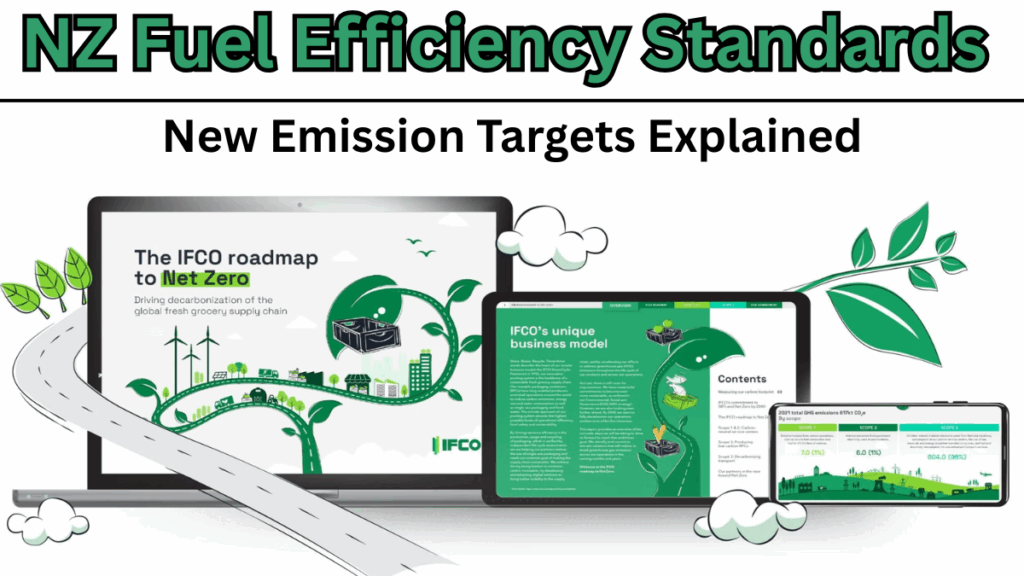New Zealand is taking bold steps towards a cleaner, greener future with the introduction of NZ fuel efficiency standards 2025. These new rules are designed to lower vehicle emissions and improve auto fuel economy, bringing positive change for drivers and the environment alike.

Table of Contents
What Are the New NZ Fuel Efficiency Standards 2025
The NZ fuel efficiency standards 2025 set stricter carbon dioxide (CO2) emission limits for new and imported vehicles. These changes are part of the government’s broader plan to help meet NZ emission targets and support climate action.
Key objectives of these standards
-
Reduce greenhouse gas emissions from the transport sector
-
Motivate carmakers to provide cleaner, fuel-efficient, and electric vehicles
-
Offer consumers more sustainable vehicle choices
-
Support New Zealand’s carbon-neutral vision by 2050
The New Emission Targets at a Glance
Here’s an easy-to-read table showing the new targets:
Vehicle Type |
CO2 Target (g/km) |
Improvement Over 2023 Levels |
|---|---|---|
Passenger cars |
105 |
40% reduction |
Light commercials |
132 |
35% reduction |
These tighter NZ emission targets will push manufacturers to focus on low-emission and electric vehicle models to comply with the regulations.
How Will This Affect Car Buyers
For New Zealand car buyers, the NZ fuel efficiency standards 2025 mean:
-
A wider range of eco-friendly vehicles including hybrids and EVs
-
Better fuel savings thanks to improved auto fuel economy
-
Possible rebates or incentives for purchasing low-emission cars
What Are the Challenges for Automakers
The new standards present several challenges for car manufacturers:
-
Increased innovation needs as they develop or import compliant models
-
Higher production and compliance costs
-
Penalties for failing to meet NZ emission targets
Why Are These Changes Important
The transport sector is one of the biggest contributors to New Zealand’s carbon emissions. The updated standards are a critical move to:
-
Cut the nation’s carbon emissions
-
Improve air quality
-
Help meet international climate commitments
FAQs
What vehicles are covered by the NZ fuel efficiency standards 2025
The standards apply to new and imported passenger vehicles and light commercial vehicles. Heavy trucks and buses are currently not included.
Will the new NZ emission targets increase car prices
Some vehicles may have higher upfront costs due to new technology, but lower fuel use and potential government rebates could balance this out.
How do NZ’s 2025 standards compare internationally
New Zealand’s targets are in line with other progressive markets such as the EU and Australia in pushing for cleaner vehicles and better auto fuel economy.
What happens if manufacturers don’t meet the NZ fuel efficiency standards 2025
Car makers who don’t meet the required targets may face financial penalties, encouraging faster adoption of clean technologies.
Click here to learn more
